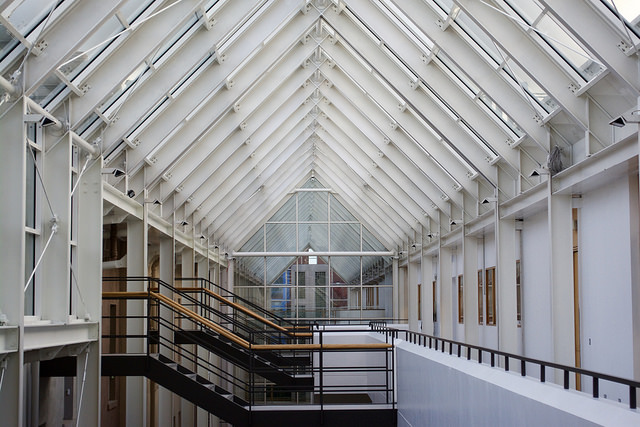Trinity-led research has developed a technique for characterising the complex web of interactions between cells in the nervous system. This new method allows scientists to investigate the connections between nerve cells and may lead to disease treatments in the future.
Unravelling the staggering complexity of the nervous system is no easy task. In humans, billions of nerve cells or “neurons” organise themselves into elaborate networks with wires called “axons” connecting them to other neurons. Our understanding of these nervous connections and how they are established remains incomplete. Repairing these networks when damage or disease occurs is therefore quite a challenge.
The research, led by Prof Juan Pablo Labrador, an Assistant Professor of Genetics at Trinity, was published today in the biomedical journal eLife, builds upon the methods used by researchers studying these interactions in the past and solves some of the problems involved. While this study examined the nervous system of fruit flies, it is hoped that the new method will be applied to humans in the future.
The surfaces of nerves are decorated with “labels”, proteins which help to direct their development into a network of cells. During the embryonic development of the nervous system, these proteins bind with special receptors found on axons, which respond to the information on the labels.
In a press statement, Labrador likened the receptors to traffic lights, guiding the nerves: “The labels tell them not to go to certain places and instead tell them to go where they are supposed to. It is the job of the guidance receptors to sense these labels and steer the nerves towards or away from them based on the information on them.”
Studying the global patterns of interactions between receptors and label proteins, called “interactomes” has proven difficult for researchers, as the individual interactions are quite weak and short-lived. In recent years, some of these challenges have been met by techniques which make these interactions stronger and more suitable for standard biochemical analysis. Labrador’s work has led to a new method, called the Bio-Plex Interactome Assay, which may enable even faster and more sensitive analysis of these interactomes.
Using this novel technique, the team could describe how receptors called beaten-path receptors recognise and bind to the sidestep family of labels. The sidestep family is found on muscles, where they bind to beaten-path receptors, leading to the development of the muscular nervous system. Beaten-path receptors guide the axons of motor nerves, allowing them to establish appropriate connections with specific muscles by interacting with their sidestep labels. The novel Bio-Plex Interactome Assay method allowed the researchers to discover three new interactions between beaten-path and sidestep receptors.
Improvements in methods used to study these interactomes are encouraging steps toward re-establishing damaged networks in the future, as Labrador notes: “Our work builds on our understanding of how the nervous system is wired by complex codes of molecules. This understanding has already proven essential to understand various nervous system diseases and should one day open doors to treating people.” He commented on how the technique developed in this research could be applied to disease treatment in the future, suggesting that “severed nerve connections in a spinal cord injury could be reestablished if the right labels that attract axons are provided at the site of injury”.
Given the debilitating consequences of an injury or disease disrupting the interactions of neurons, this work is quite promising. It allows researchers to characterise the labyrinthine interactions of the nervous system and could lead to treatments for the damage which it may incur.







